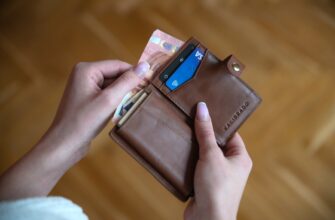- Store Funds Without KYC: Best Practices for Secure & Private Asset Management
- Why Consider Non-KYC Fund Storage?
- Best Practices for Storing Funds Without KYC
- Key Risks and Mitigation Strategies
- Top Alternatives to KYC-Based Storage
- FAQ: Storing Funds Without KYC
- Is non-KYC fund storage legal?
- What’s the safest wallet for non-KYC storage?
- Can I avoid KYC completely in crypto?
- How do I recover funds if I lose my wallet keys?
- Are privacy coins truly anonymous?
Store Funds Without KYC: Best Practices for Secure & Private Asset Management
In today’s digital economy, Know Your Customer (KYC) protocols are standard for financial platforms—but they require sharing personal data like IDs and proof of address. For users prioritizing privacy, accessibility, or speed, learning how to store funds without KYC is essential. This guide explores practical, secure methods to manage assets privately while minimizing risks. We’ll cover wallet strategies, risk mitigation, and alternatives that respect your anonymity.
Why Consider Non-KYC Fund Storage?
KYC-free storage appeals to users for several key reasons:
- Privacy Protection: Avoid exposing sensitive personal data to third parties or potential breaches.
- Global Accessibility: Bypass geographic restrictions affecting KYC-compliant platforms.
- Speed & Convenience: Skip lengthy verification processes for instant access to funds.
- Censorship Resistance: Maintain control without institutional oversight or freezes.
Best Practices for Storing Funds Without KYC
Follow these strategies to securely manage assets while preserving anonymity:
- Use Non-Custodial Wallets: Opt for wallets like Exodus, MetaMask, or Trust Wallet where you control private keys—no ID required.
- Leverage Hardware Wallets: Store crypto offline via devices like Ledger or Trezor for “cold storage,” immune to online hacks.
- Explore Privacy Coins: Utilize Monero (XMR) or Zcash (ZEC), designed to obscure transaction details inherently.
- Employ Multi-Signature Wallets: Require multiple approvals for transactions, adding security layers without KYC.
- Use Decentralized Exchanges (DEXs): Trade via Uniswap or PancakeSwap—no account setup or personal data needed.
Key Risks and Mitigation Strategies
Non-KYC storage has unique challenges. Address them proactively:
- Risk: Loss of Access
Mitigation: Securely back up seed phrases offline (e.g., engraved metal plates). Never store digitally. - Risk: Security Vulnerabilities
Mitigation: Enable 2FA, use antivirus software, and verify wallet addresses before transactions. - Risk: Regulatory Uncertainty
Mitigation: Stay informed about local laws. Avoid mixing non-KYC funds with regulated platforms. - Risk: Scams & Phishing
Mitigation: Download wallets only from official sources. Double-check URLs and avoid “too good to be true” offers.
Top Alternatives to KYC-Based Storage
Beyond standard wallets, consider these privacy-centric options:
- Peer-to-Peer (P2P) Platforms: LocalBitcoins or Bisq facilitate direct trades using escrow, bypassing centralized KYC.
- Self-Custodied Stablecoins: Hold USD-pegged assets like DAI in your private wallet to avoid volatility.
- Privacy-Focused Blockchains: Networks like Secret Network enable encrypted data and computations.
FAQ: Storing Funds Without KYC
Is non-KYC fund storage legal?
Yes, in most jurisdictions, self-custody of assets is legal. However, converting crypto to fiat via regulated exchanges typically requires KYC. Always research local regulations.
What’s the safest wallet for non-KYC storage?
Hardware wallets (e.g., Ledger Nano X) offer optimal security. For mobile users, open-source non-custodial wallets like Electrum (Bitcoin) or Cake Wallet (Monero) are reliable.
Can I avoid KYC completely in crypto?
You can for storage and peer-to-peer transactions. However, onboarding fiat (e.g., buying crypto with USD) or cashing out large sums usually involves KYC on centralized platforms.
How do I recover funds if I lose my wallet keys?
Without a backup seed phrase, recovery is impossible. This underscores the critical need for secure, offline backups—consider it your “ultimate password.”
Are privacy coins truly anonymous?
They offer stronger anonymity than Bitcoin or Ethereum but aren’t foolproof. Advanced techniques like chain analysis can sometimes de-anonymize transactions. Combine with VPNs/Tor for enhanced privacy.
Mastering how to store funds without KYC empowers you with financial autonomy. By prioritizing non-custodial tools, rigorous security habits, and ongoing education, you can protect assets while navigating the evolving landscape of digital privacy.








